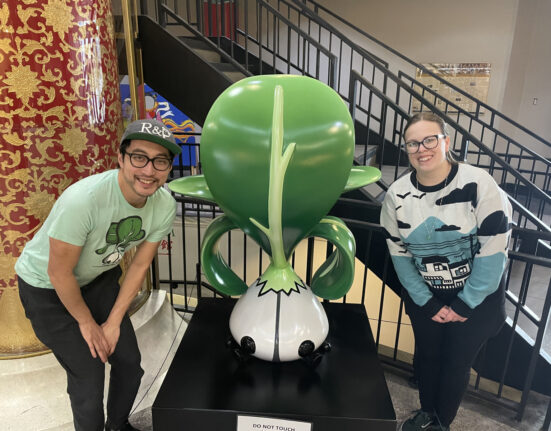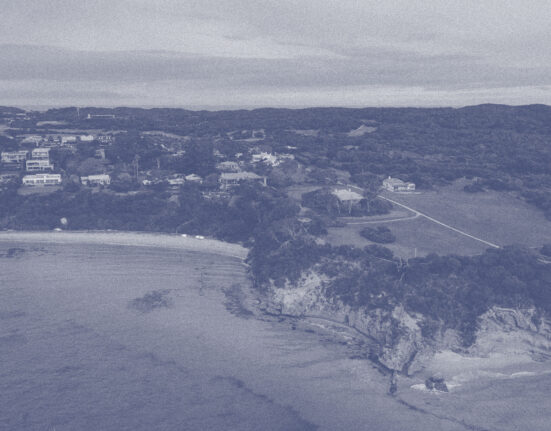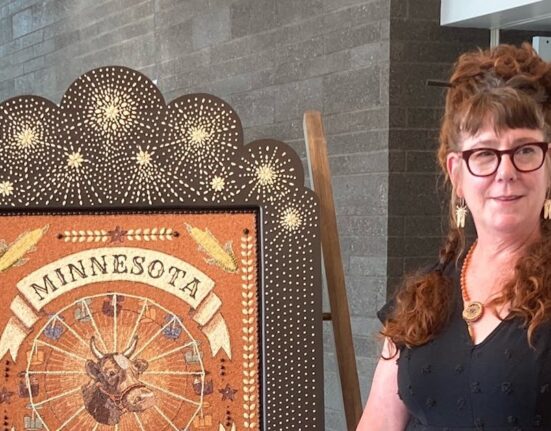After two years of design, research, and creativity, Princeton’s 2025 Art of Science Exhibition is almost ready to open. The exhibition will feature 33 two-dimensional still images and roughly a dozen animations, and will replace the 2023 Exhibition, which is currently on display in the Friend Center for Engineering Education.
The Art of Science Exhibition is a biennial art show revived after the pandemic in 2023 that showcases selected two-dimensional works of visual art and animations which speak to scientific inquiry. The competition is open to Princeton students, staff, faculty, researchers, and alumni.
The show began as a shared idea between photographer and former Princeton visual arts teacher Andrew Moore ’79 and his teaching assistant Alex Halderman GS ’09 in 2005.
“Their concept was to run a photo competition that examined imagery that had emerged in the pursuit of science as works of art,” Adam Finkelstein said in his opening remarks at the 2023 Exhibition. Finkelstein was recruited to help run the first exhibition and is the only remaining founding member on the current organizing committee.
“This show is the symbiosis of art and science,” said Barron Bixler, creative director of the Blue Lab and a professional specialist in the Effron Center for the Study of America.
Bixler and his three technically-savvy, artistically-inclined colleagues Adam Finkelstein, Tim Szetela, and Brendan Byrne single-handedly planned and coordinated the layout, design, and selection of the works of scientific art.
Since the pandemic, they’ve made several changes to the show, with the goal to make it more engaging and representative of the scientific community.
“We opened up what counted as a work of ‘art of science’ to include works made by non-scientists that were either in the spirit of scientific inquiry, or that critiqued science, or that were more documentary works of art that were thinking about the scientific process, how science is done or made out in the world,” Brixler said.
This general description of the “art of science” guides the selection committee — a group of five to six independent reviewers made up of Art of Science alumni, faculty, and students — as they review and score all the art on a ranking system designed by Finkelstein. After the selection committee scores all the images, the four organizers evaluate how much space they have remaining for the exhibition and review all the art again, ultimately arriving at a selection of just over 40 pieces chosen from the 100+ online submissions they received.
The chosen artwork pieces run the full gamut of science.
“Some of them are electron microscopy images. Some of them are astrophotography images. Some of them are computer modeling images. Some of it’s, you know, wild observational wildlife photography,” Bixler said. “We usually have about a ratio of three-quarters still images to one-quarter animations.”
Lauren Dreier GS and postdoc Tom Marzin are the scientist-artist team for one of those still images. Their work focuses on under-extrusion — when the 3D printer prints less filament than intended — in the process of circular 3D printing towers. In their case, however, the disorder that emerges from under-extrusion is intentional, as they purposely supply too little material to affect the structure of the tower that is printed.

“I was intentionally trying to mess up the printing, to fail the printing, because I’m basically tuning in the wrong way my printer. So the printer is not supposed to do that. And despite that … we try to create a mess, and the physics or the science try to correct it by trying to match somehow a sort of regular pattern; regular patterns appear in the mess,” Marzin explained. That mess and the regular patterns that emerge from under-extrusion is what the team is trying to understand in the context of physics.
While Dreier and Marzin said they had a variety of ways to show their work, Dreier said that “Tom just went ahead and 3D printed 100 towers … I really fixated on this idea of this incredible collection that Tom made, because we have them in the lab, and they’re just striking.”
Dreier and Marzin’s piece shows 100 different 3D printed towers, ordered to show the gradual changes that occur within the towers when they adjust the 3D printer for different flow rate and height as the towers gradually become more cylindrical.
“It was regular shapes appearing from a mess. And it was really beautiful to see that,” Marzin said.
Dreier and Marzin also said that submitting their work to the exhibition gave them another way to think about their work. “You need a lot of creativity to be successful in science,” Dreier said.
“To be able to see the research in another way, I think, is really great,” Marzin added.
For Bixler, Finkelstein, Szetela, and Byrne, once the artists have submitted their work, it’s their turn to design the exhibition layout.
“We really like to play with scale,” Bixler said. “I really love the idea that a photo of something microscopic is actually shown very large … It is this wonderful way that you can use scale to engage the audience and get them making these incredible points of connection that are really surprising.”
The organizers work with the selected artists to determine how their pieces will be displayed in the show. The images are printed through Campus Printing and hung without frames in the Friend Center, where they can be viewed year-round, while the animations are run on computer monitors on a constant loop.
Bixler loves how the show makes people think about problems encountered in science in a new light. He hopes people come away “with a sense of surprise and delight” at the meld of technicality and creativity on display and that the art and layout “spark these really revelatory moments for people as they’re going through the show.”
Dreier and Marzin, meanwhile, envision the audience looking at their image like scientists themselves, trying to find order in the variations of their towers: “They’re probably gonna do more or less what we are doing in the lab,” Marzin said.
Whether you go for the art, the science, or some combination of the two, the Art of Science Exhibition promises to be a stimulating display of art and intellect.
The 2025 Art of Science Exhibition opens Thursday, May 8 with a reception at 5 p.m. in the Friend Center and will be on display until 2027, when the next exhibition will be selected.
Annika Plunkett is a staff writer for The Prospect and a member of the Newsletter team. She can be reached at ap3616[at]princeton.edu.







